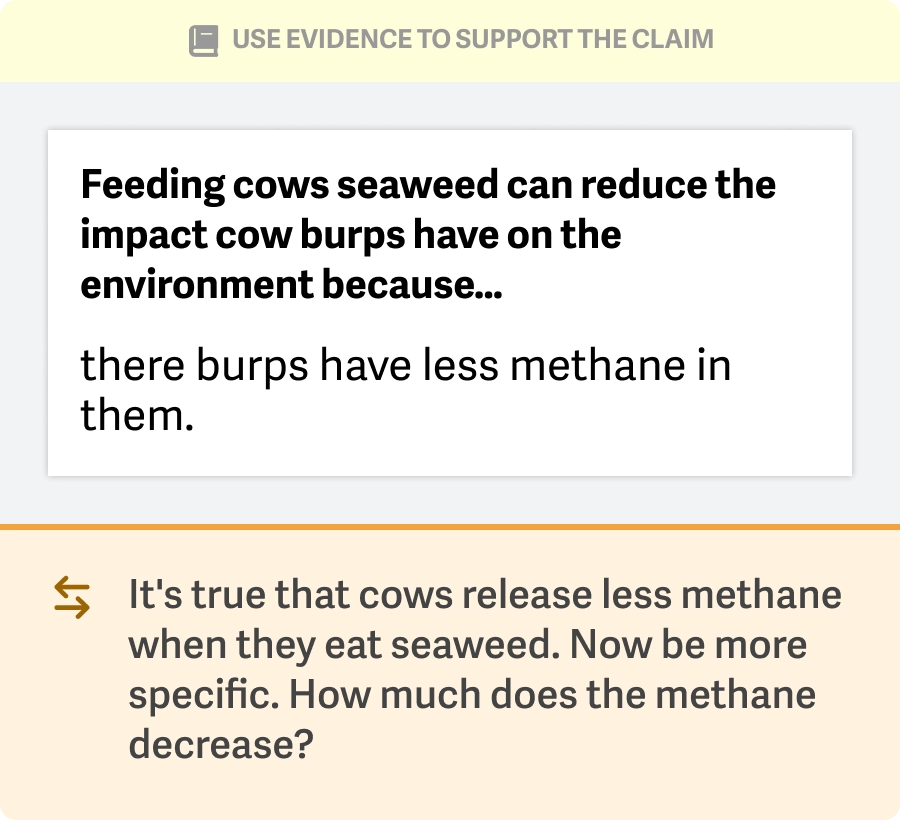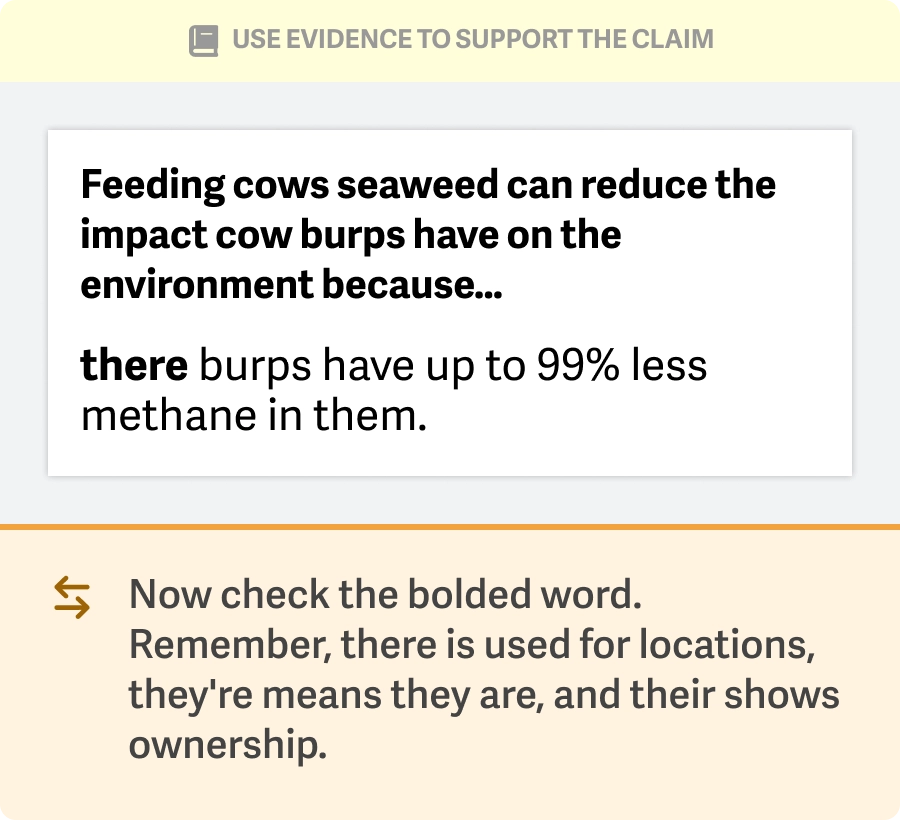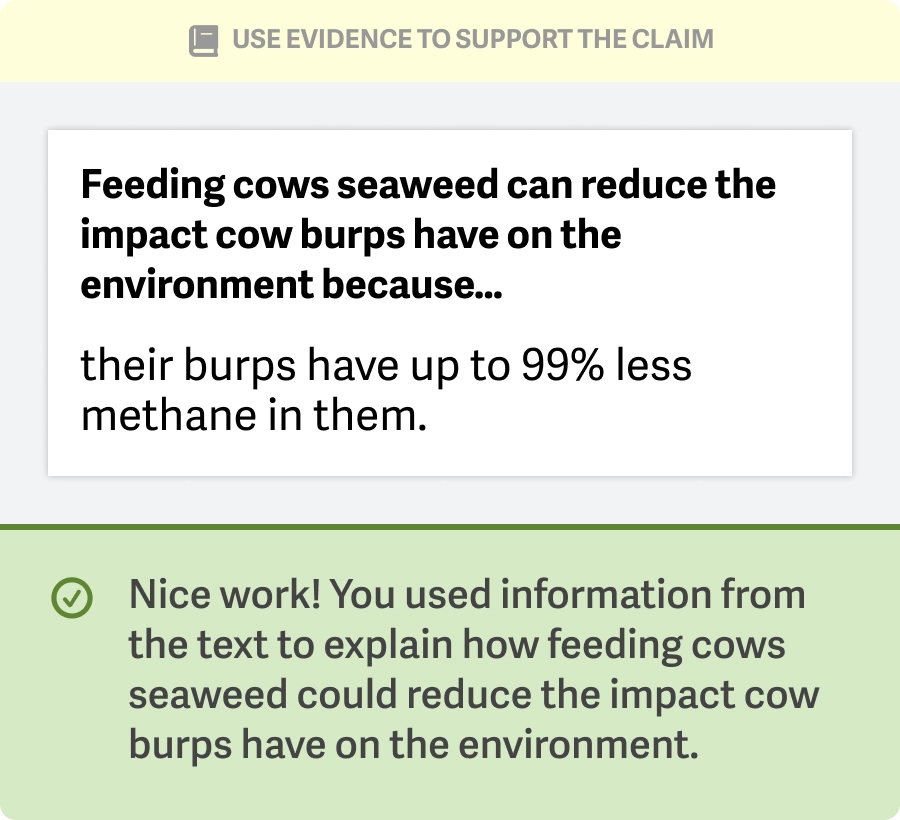Provide your students with nonfiction texts paired with AI-powered writing prompts, instead of multiple-choice questions, to enable deeper thinking. Students read a nonfiction text and build their comprehension through writing prompts, supporting a series of claims with evidence sourced from the text. Quill challenges students to write responses that are precise, logical, and based on textual evidence, with Quill coaching the student through custom, targeted feedback on each revision so that students strengthen their reading comprehension and hone their writing skills.
Designed for 8th-12th grade students, each activity takes 15-20 minutes to complete. These texts cover a wide range of topics, from 21st-century real-world issues to major historical moments and key literary themes.
Culture & Society Topics

"Should Schools Have Grade Requirements for Student Athletes?"
View a sample activityVideo not supported
Read and highlight text

Write sentences using what you read

Revise based on feedback

Example Prompt:
“How Does Eating Meat Impact Global Warming?”
1st Attempt
Quill's feedback bot provides custom feedback for every response that mirrors the feedback a teacher would provide to a student in a 1:1 context.
In this response, it's true that seaweed benefits cows by reducing their methane emissions, but the student has not specified *why* seaweed is beneficial. Quill asks the student to go back to the text and examine it more carefully to provide a reason why seaweed benefits cows and the environment. Students must use precise evidence in their response to be able to successfully complete it.


2nd Attempt
The student identified that methane is harmful to the environment but did not support their response with a key statistic from the text. Quill encourages them to be as specific as possible to stregthen their response and more accurately respond to the claim.


3rd Attempt
The student strengthened their evidence by adding a precise statistic from the text that explains how significantly seaweed impacts methane. Since the key ideas are in place, Quill now provides a mini-lesson on the grammar errors in their response. Quill only provides grammar and spelling feedback once the student has written a strong response with the key ideas from the text.


4th Attempt
At this point the student has now written a precise, textually-supported sentence. Students often come into the tool writing vague or inaccurate statements, and through multiple rounds of practice, feedback, and revision, students gain the ability to utilize precise evidence in their responses.

All writers revise

You'll be able to revise each sentence up to five times. We give you feedback because we want to help you write a stronger sentence.
We use a feedback bot

We use artificial intelligence (AI) to help us give you feedback on your writing. You should know that AI isn't always correct.
Your teacher will see your score and writing

Once the activity is complete, both you and your teacher will see a report with your score and your responses for each prompt.
Reading for Evidence Activities Now Provide a Score
We’re excited to announce that we’ve expanded scoring to Quill Reading for Evidence.
Best Practices Highlight: Walking Students Through Reading for Evidence’s Onboarding Pages
When students are new to Reading for Evidence, it can be helpful to walk through the tool's onboarding pages together.
Best Practices Highlight: Introducing Students to Reading for Evidence and the Small-But-Mighty "Because," "But," & "So"
Introducing and framing Quill Reading for Evidence practice is key. Read on for ideas!
Best Practices Highlight: Extending Quill Reading for Evidence Practice
Ideas for extending the practice students are getting with "because," "but," and "so" into content and encouraging skill transfer


